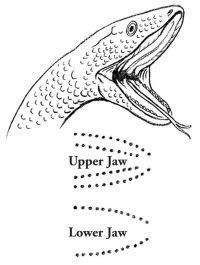How to Treat a Dog That Has a Snakebite
Poisonous snakebites are rare in North America. Most snakes are nonpoisonous, and neither poisonous nor nonpoisonous snakes will attack a dog unless provoked. But many pets are curious, and bites will occur.
If you live in or visit a snake-inhabited area, you can expect problems if you let your dog run loose. Be prepared by reading the following tips for treating snakebites.
Advertisement
Poisonous
The signs of a poisonous snakebite are two fang marks, pain, swelling, vomiting, difficulty breathing, and possible paralysis and convulsions. Be sure to watch for sings of shock, which include pale or white gums, a rapid heartbeat, or rapid breathing.
Treatment must begin as soon as possible after the bite. If the snake was killed, bring it to the veterinarian for identification. Otherwise, try to remember identifying marks.
Step 1: Restrain the dog if necessary.
Step 1a: Approach the dog slowly, speaking in a reassuring tone of voice.
Step 1b: Slip a leash around the dog's neck, then place the leash around a fixed object. Pull the dog against this object and tie the leash so the dog cannot move its head.
Step 1c: Muzzle the dog to protect yourself if necessary.
Step 2: Clip the hair from the bite area.
Step 3: Flush thoroughly by pouring 3% hydrogen peroxide directly on the bite.
Step 4: Transport the dog immediately to the veterinarian.
Nonpoisonous

The signs of a nonpoisonous snakebite are a U-shape bite and pain in the bite area. If you are not sure the snake is nonpoisonous, treat as poisonous. See above.
Step 1: Restrain the dog if necessary.
Step 1a: Approach the dog slowly, speaking in a reassuring tone of voice.
Step 1b: Slip a leash around the dog's neck, then place the leash around a fixed object. Pull the dog against this object and tie the leash so the dog cannot move its head.
Step 1c: Muzzle the dog to protect yourself, if necessary.
Step 2: Clip the hair from the bite area.
Step 3: Flush thoroughly by pouring 3% hydrogen peroxide directly on the bite.
Various injuries may cause unconsciousness in a dog. Turn to the next section for tips on what to do in this emergency situation.
